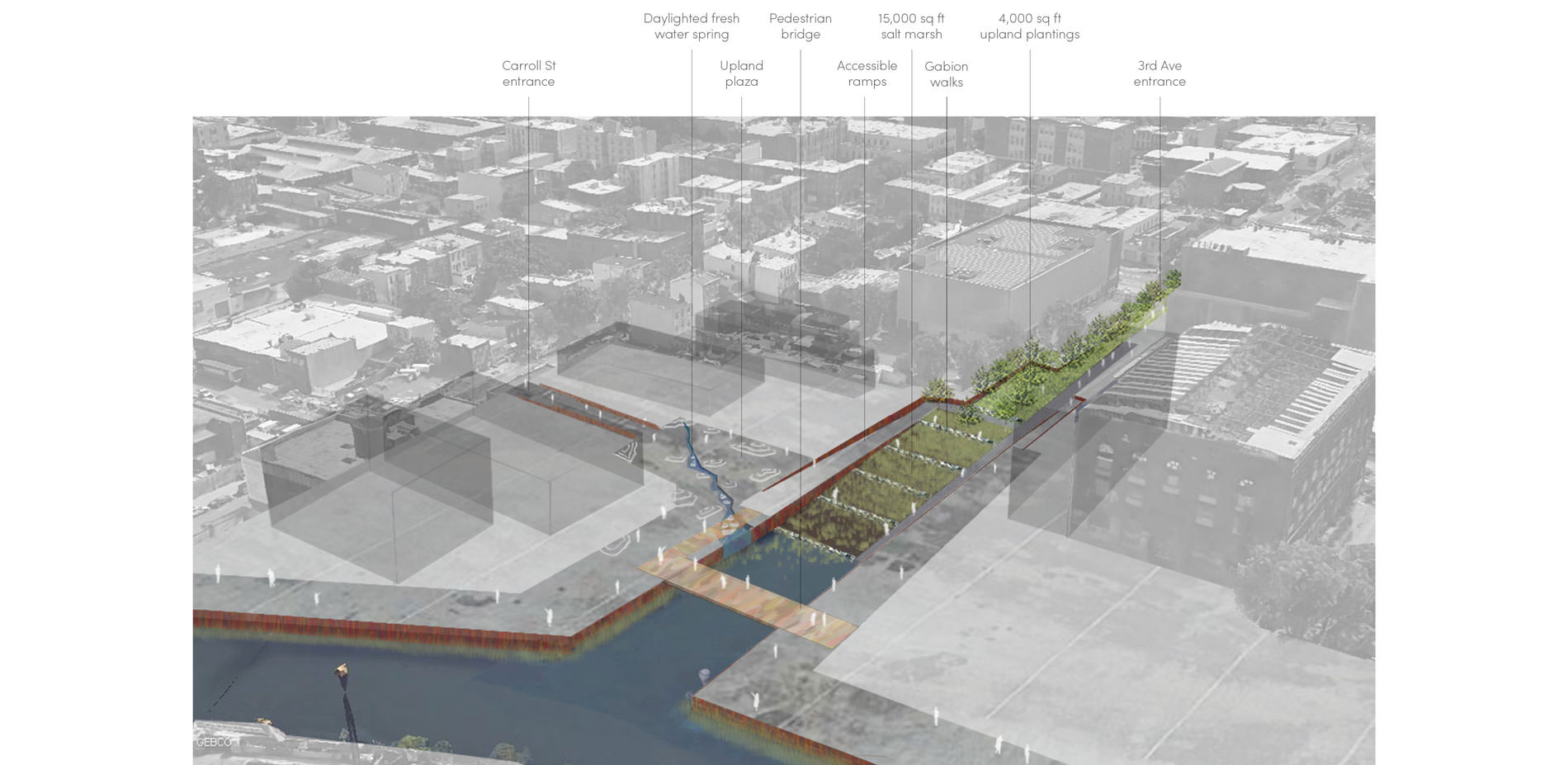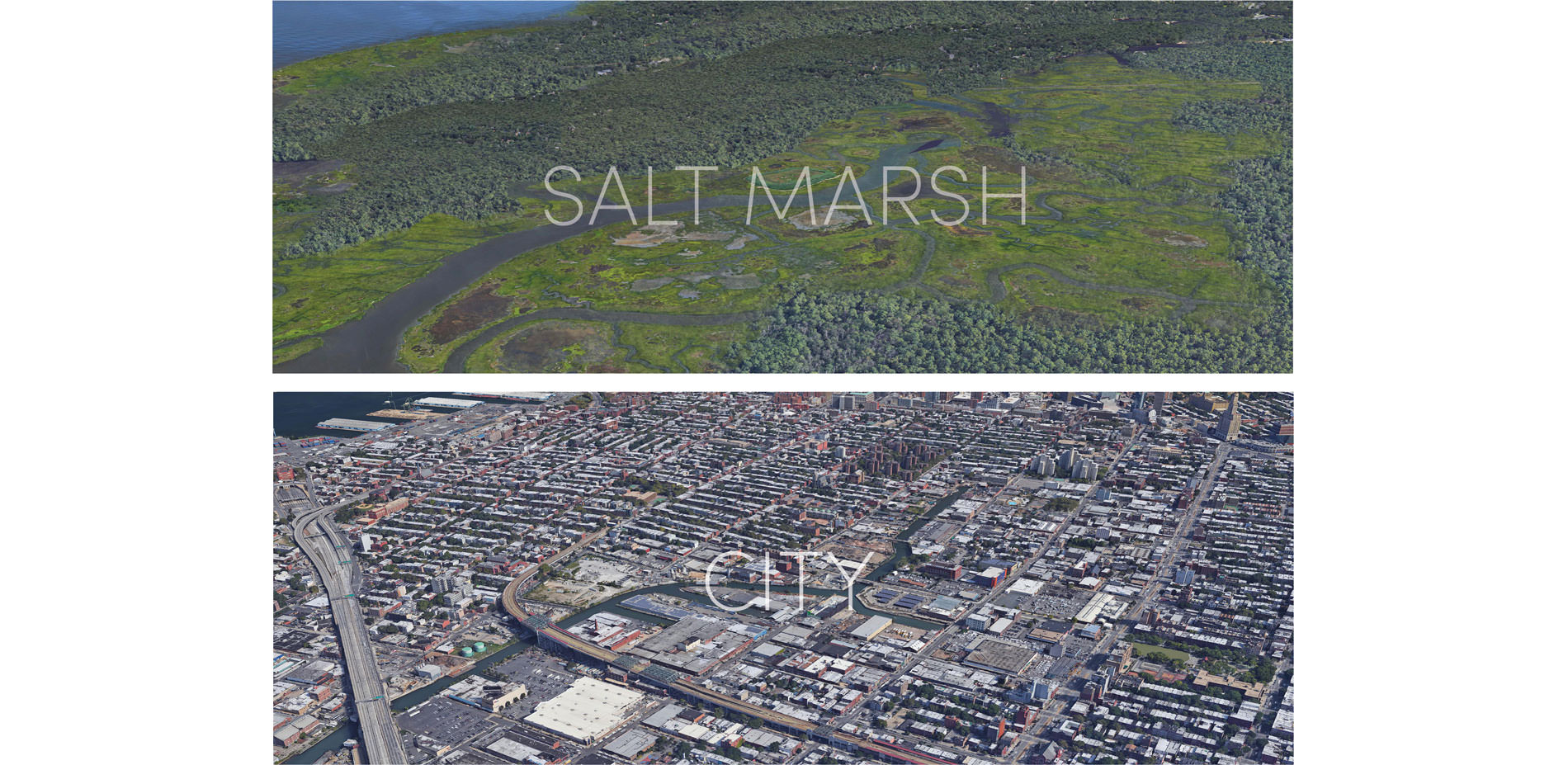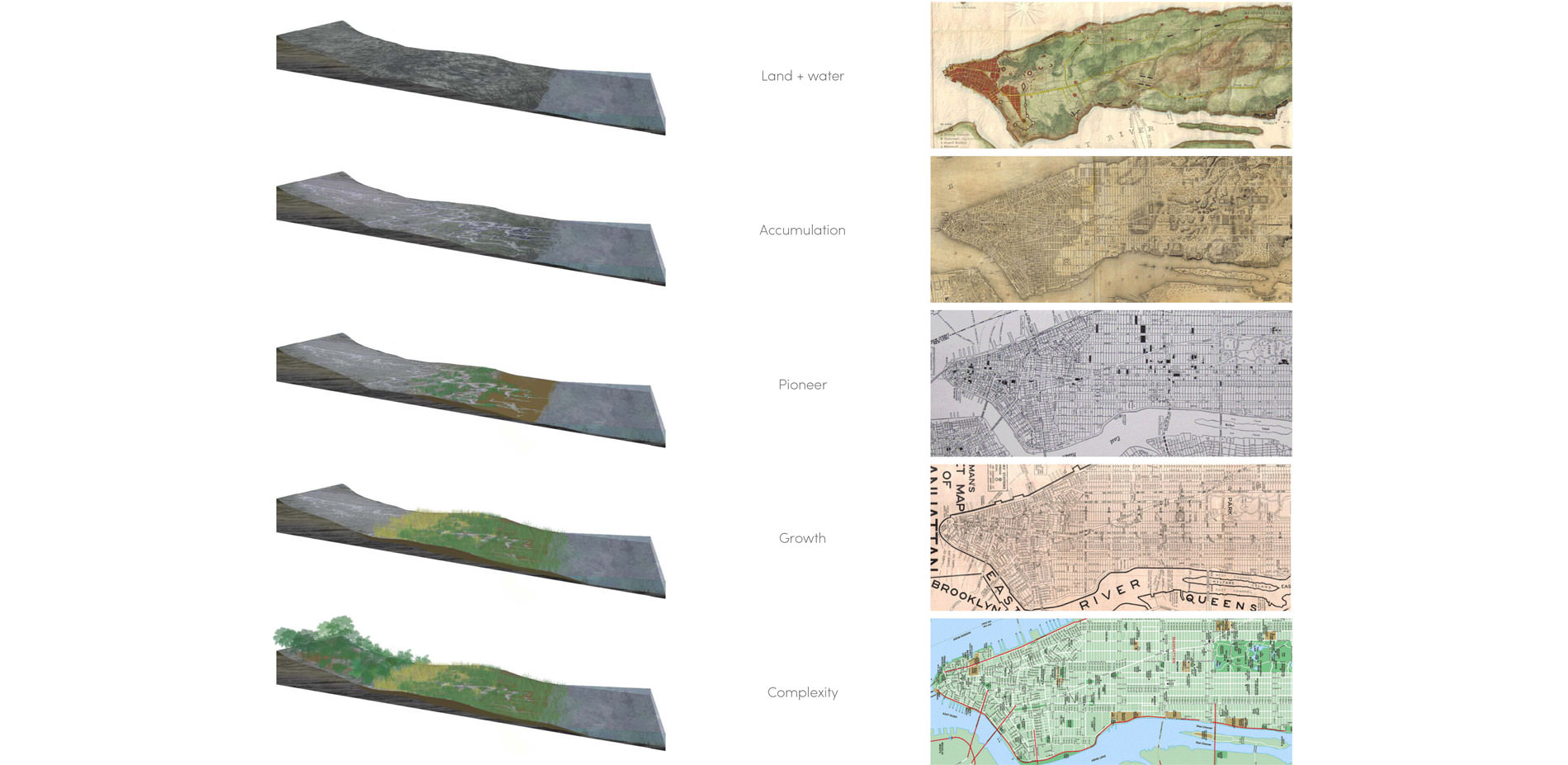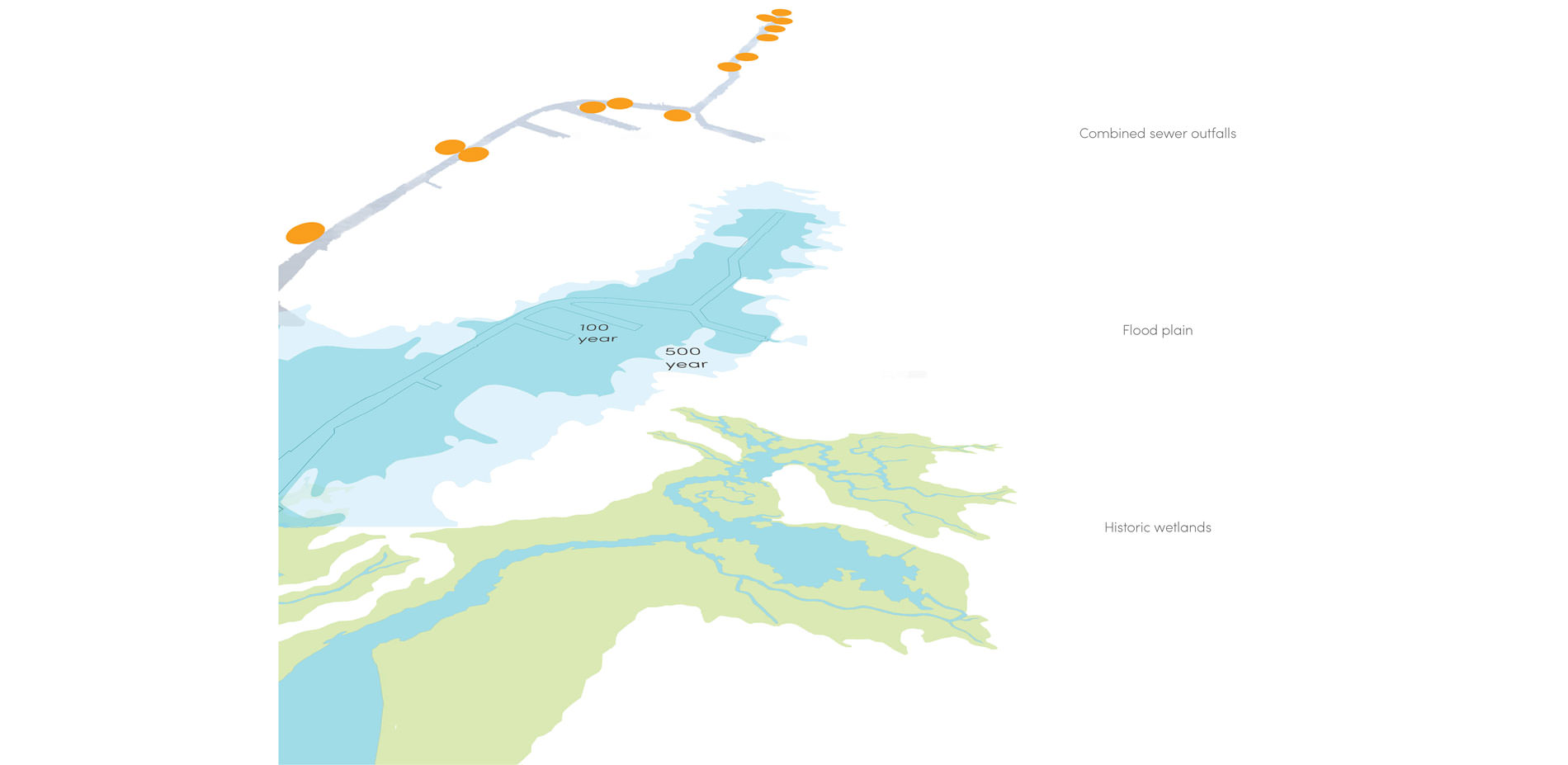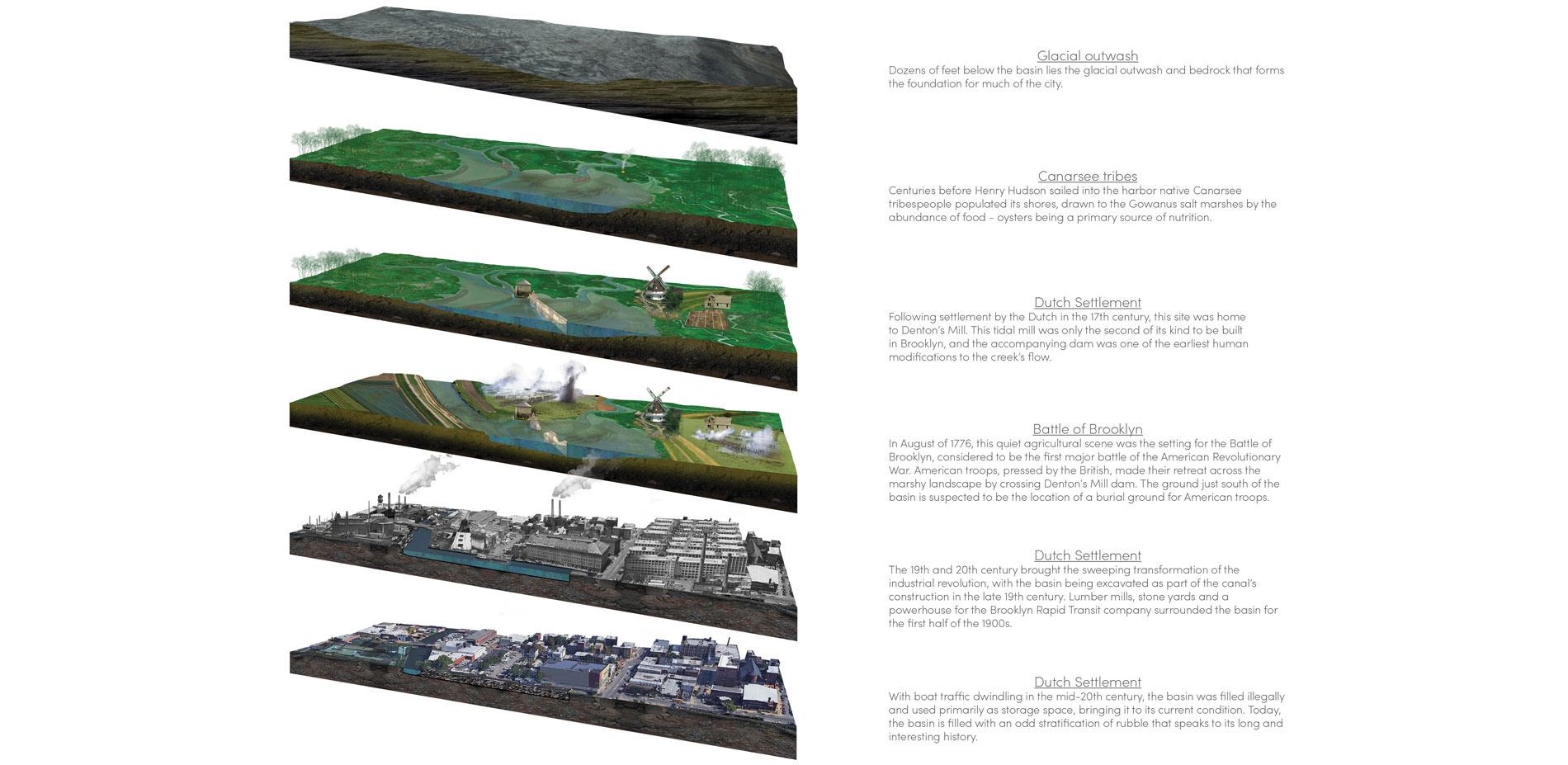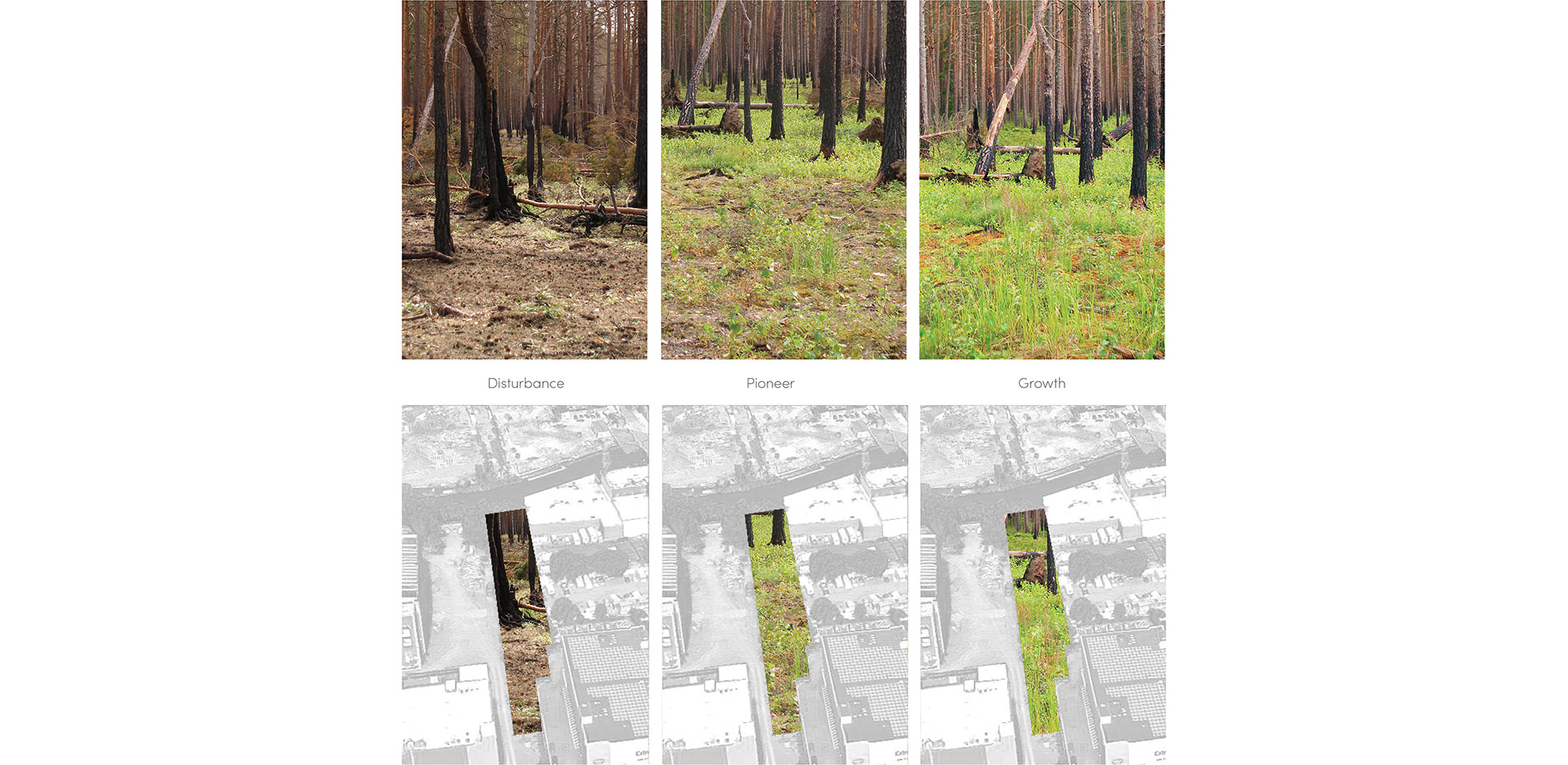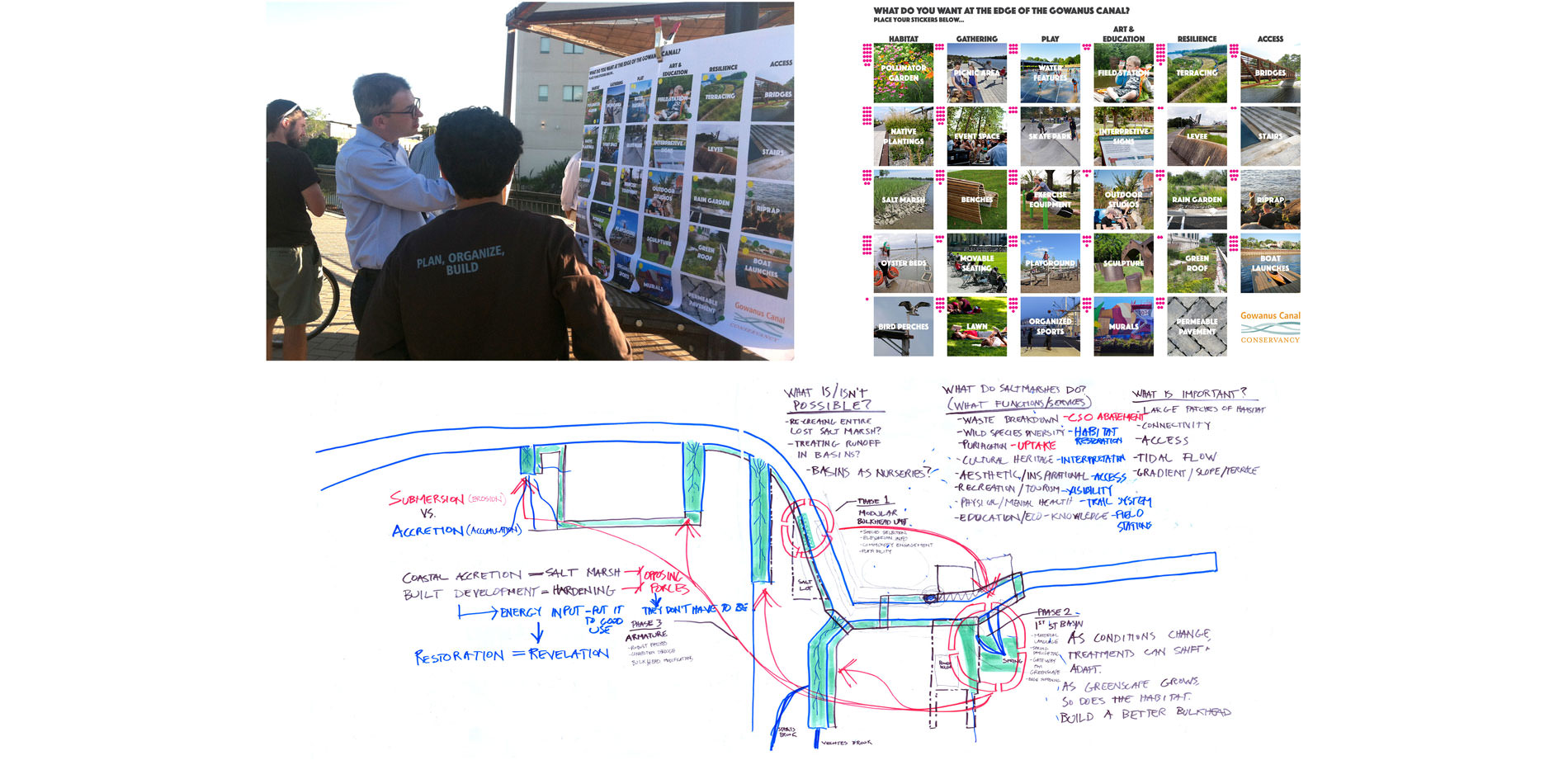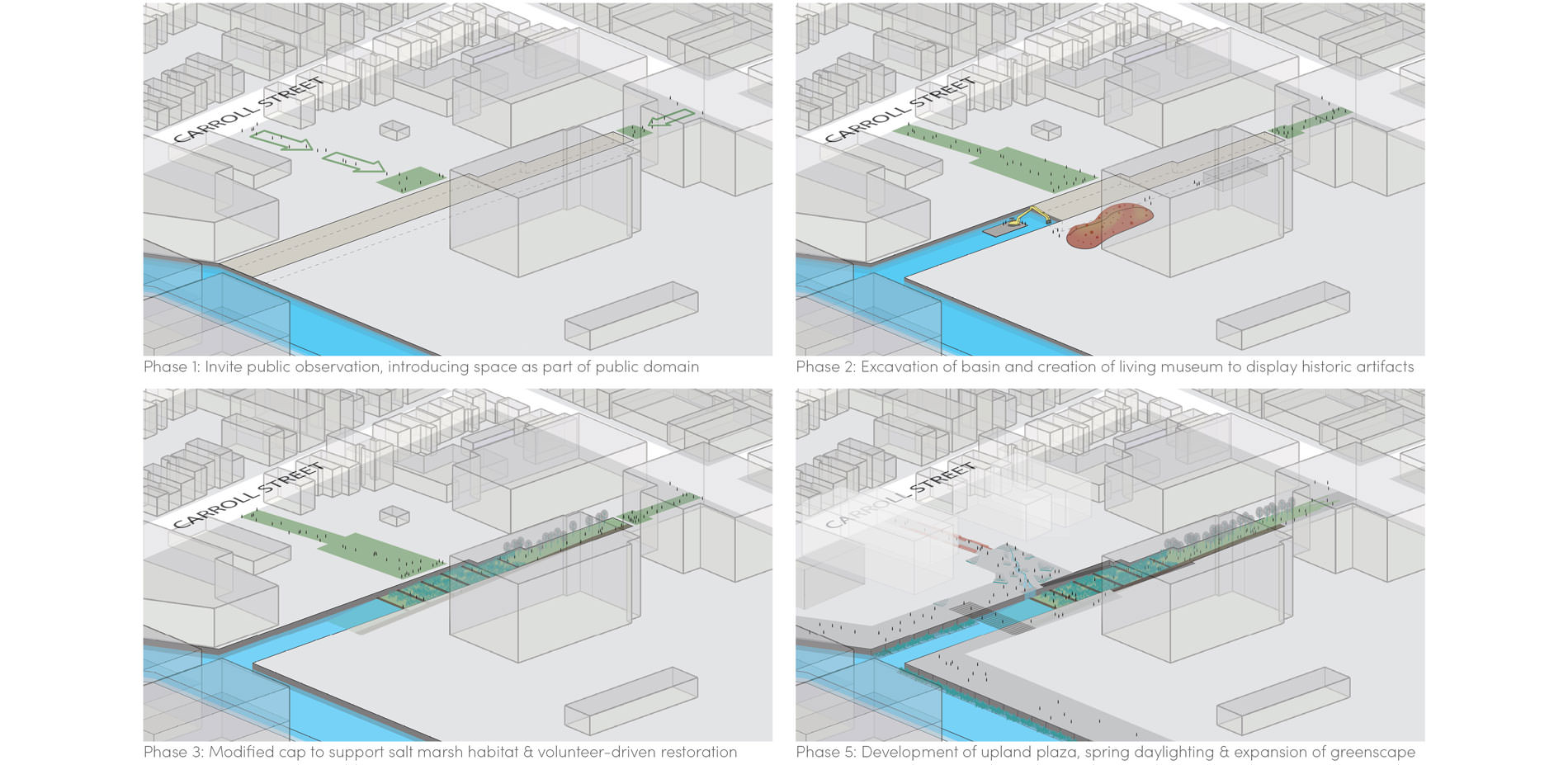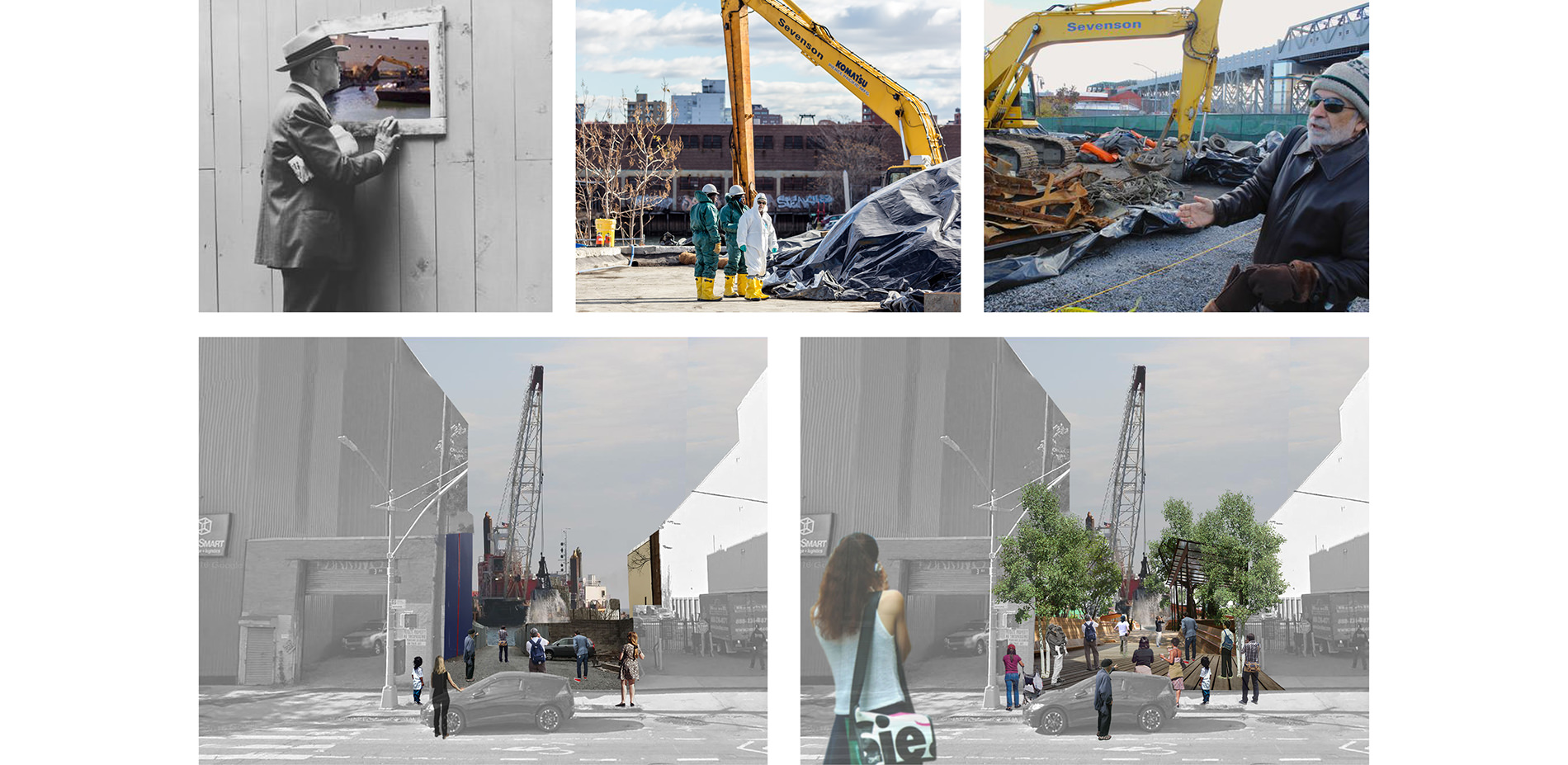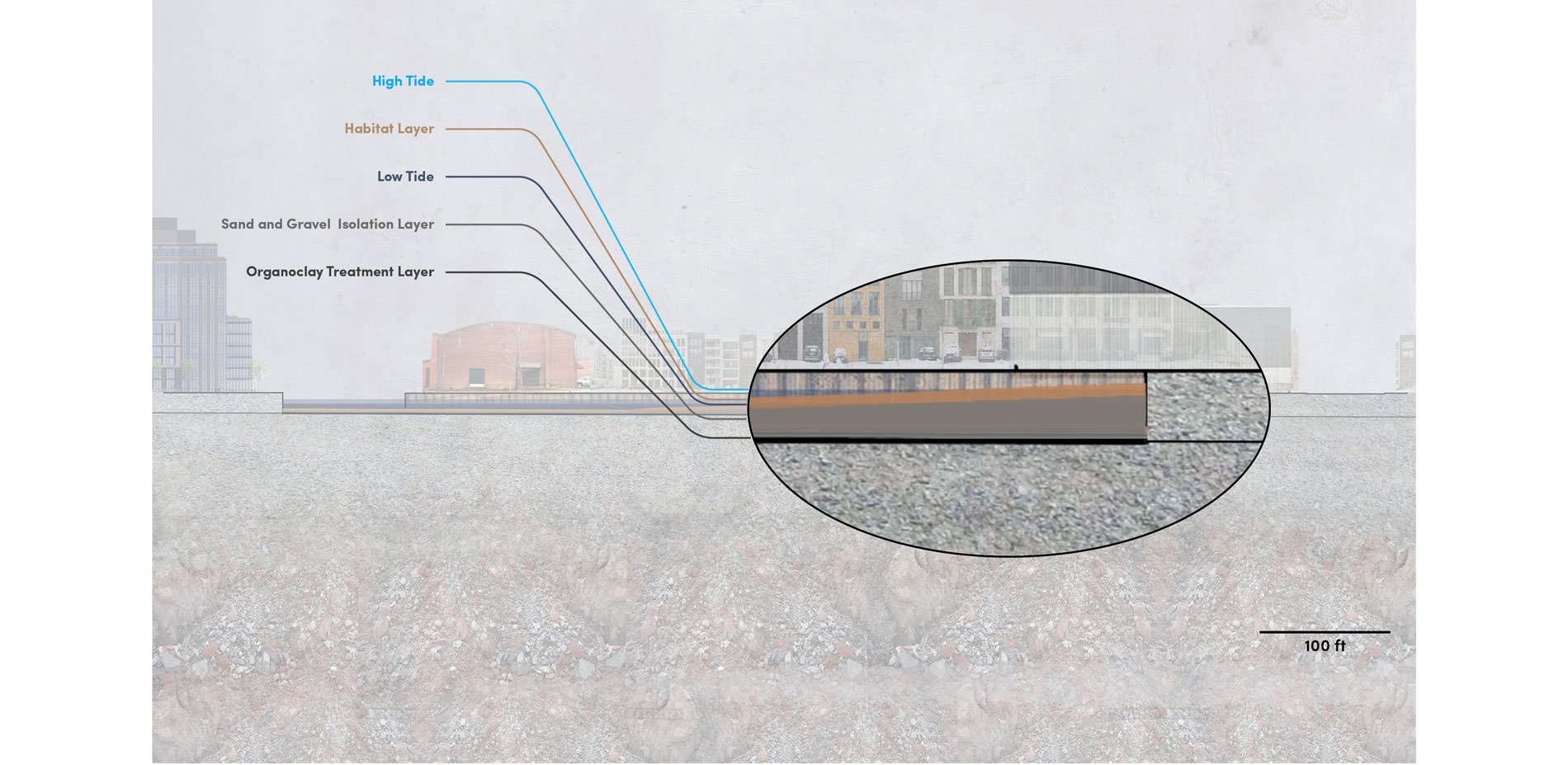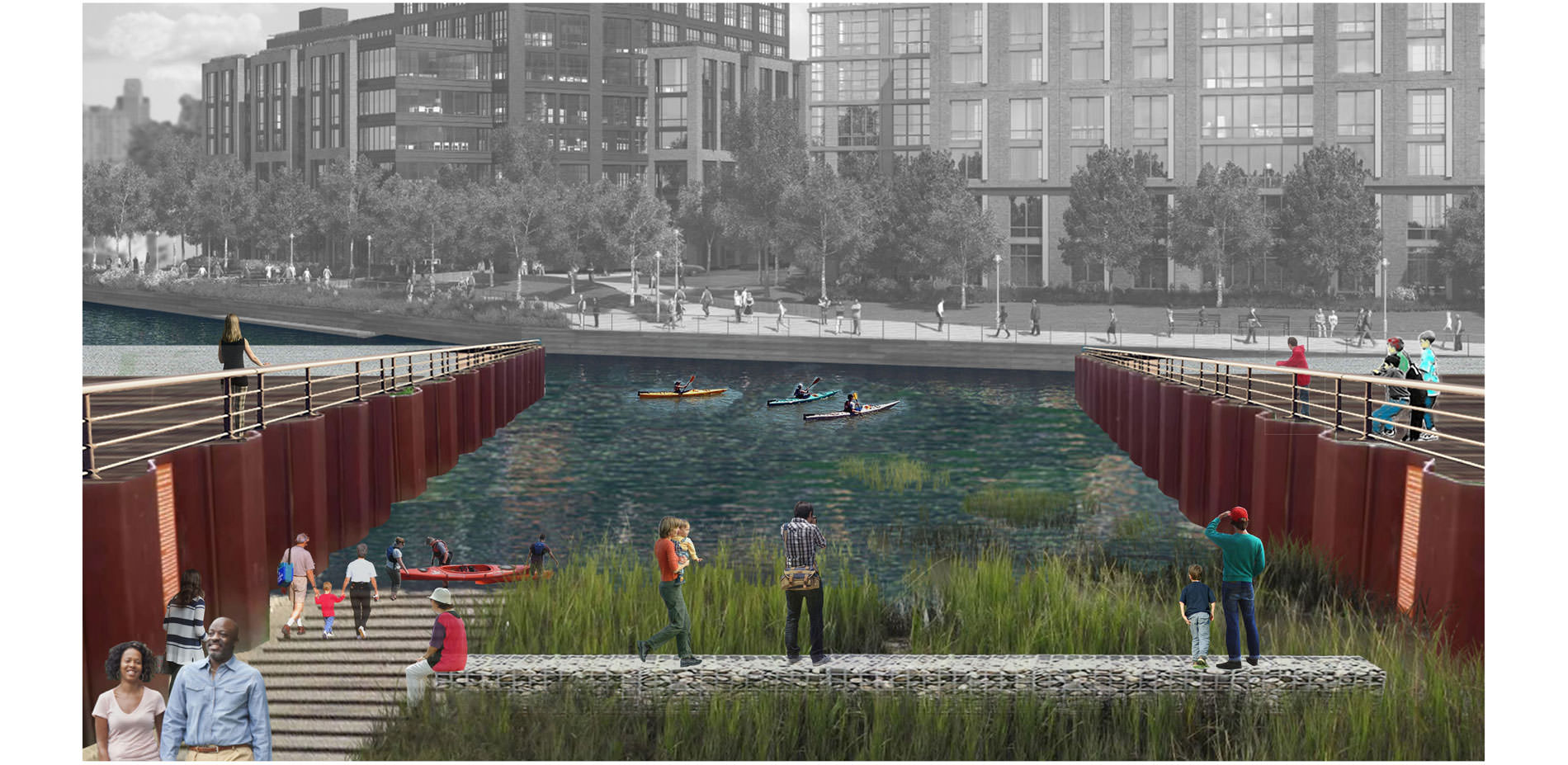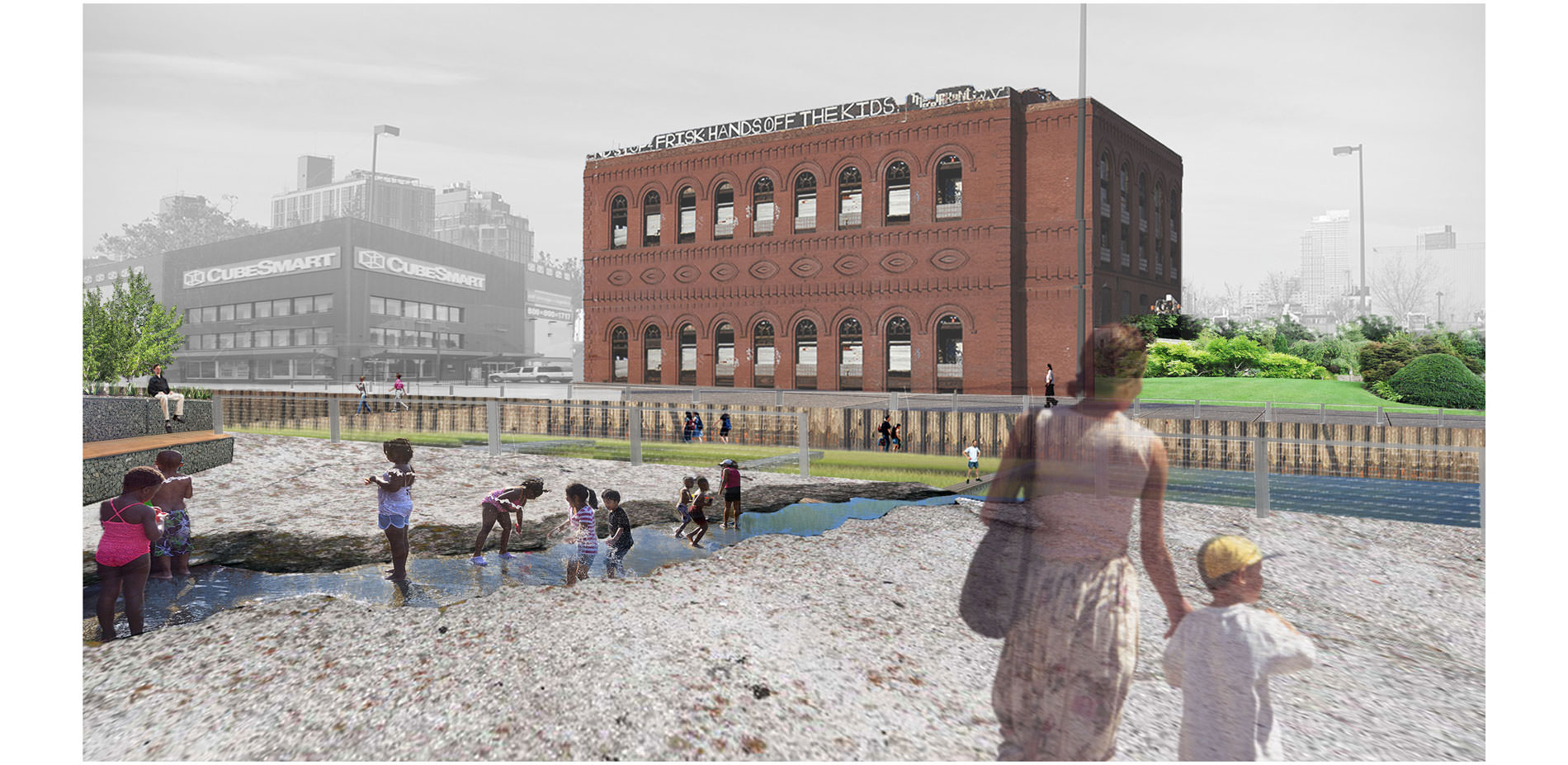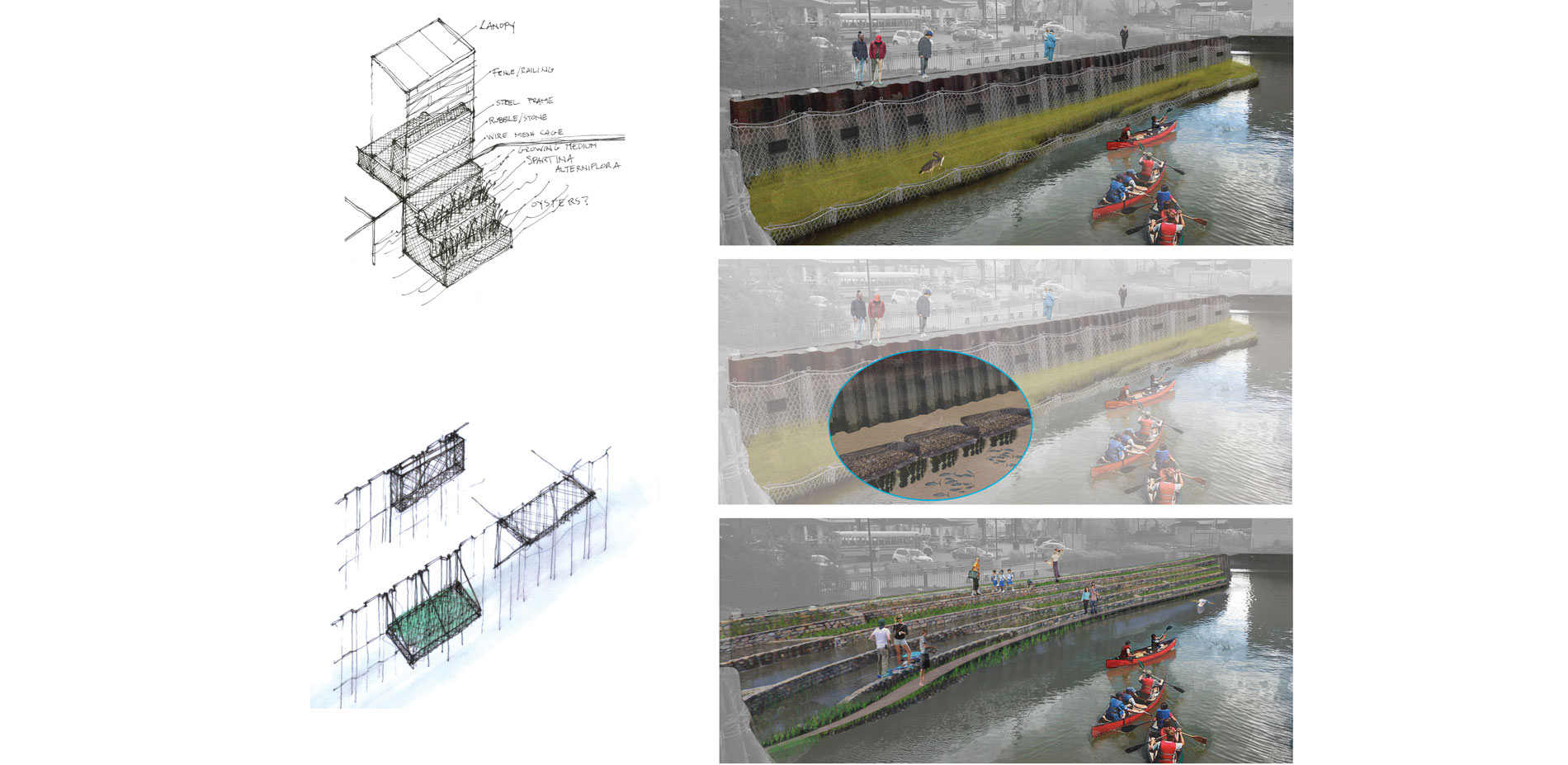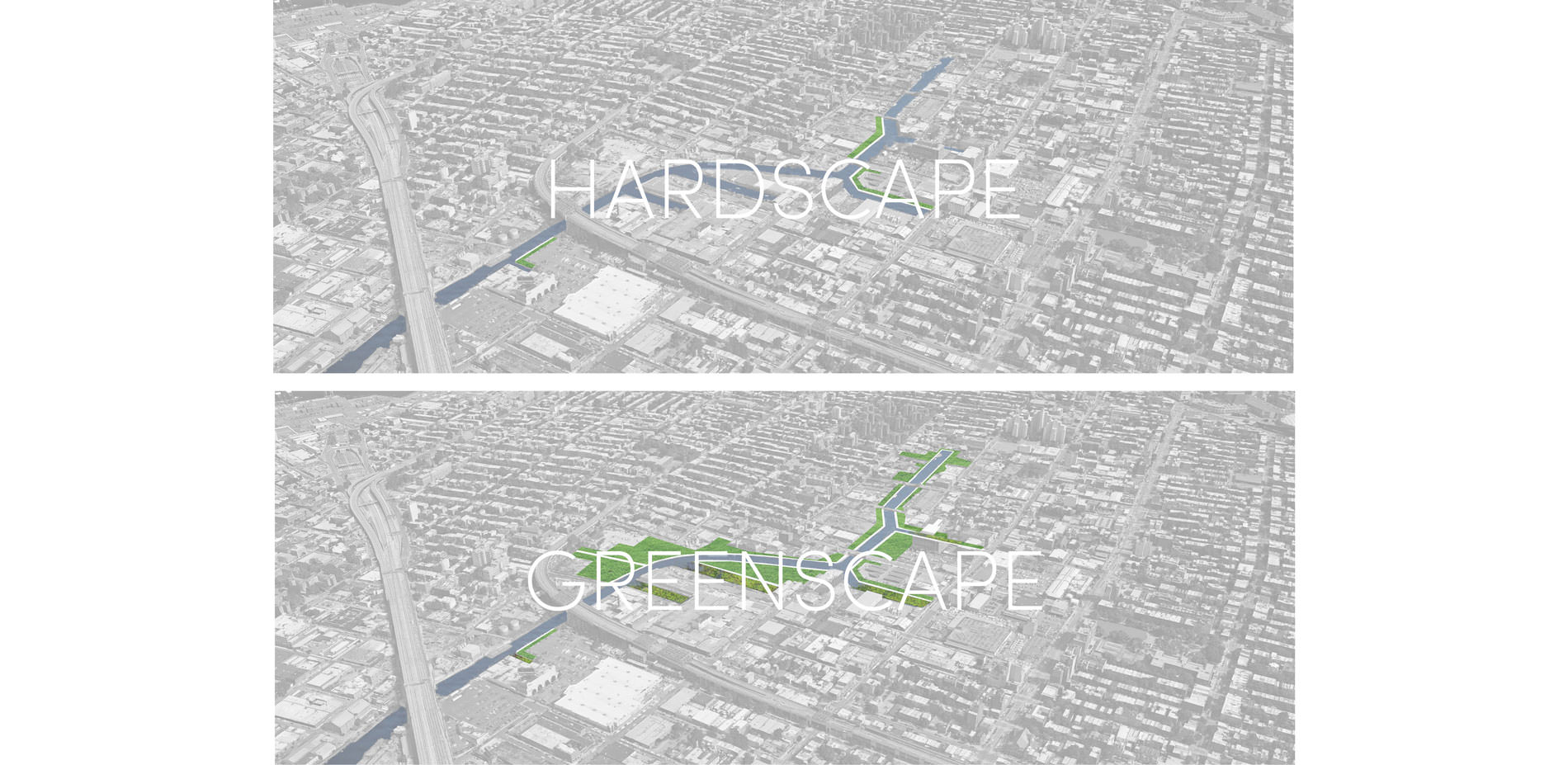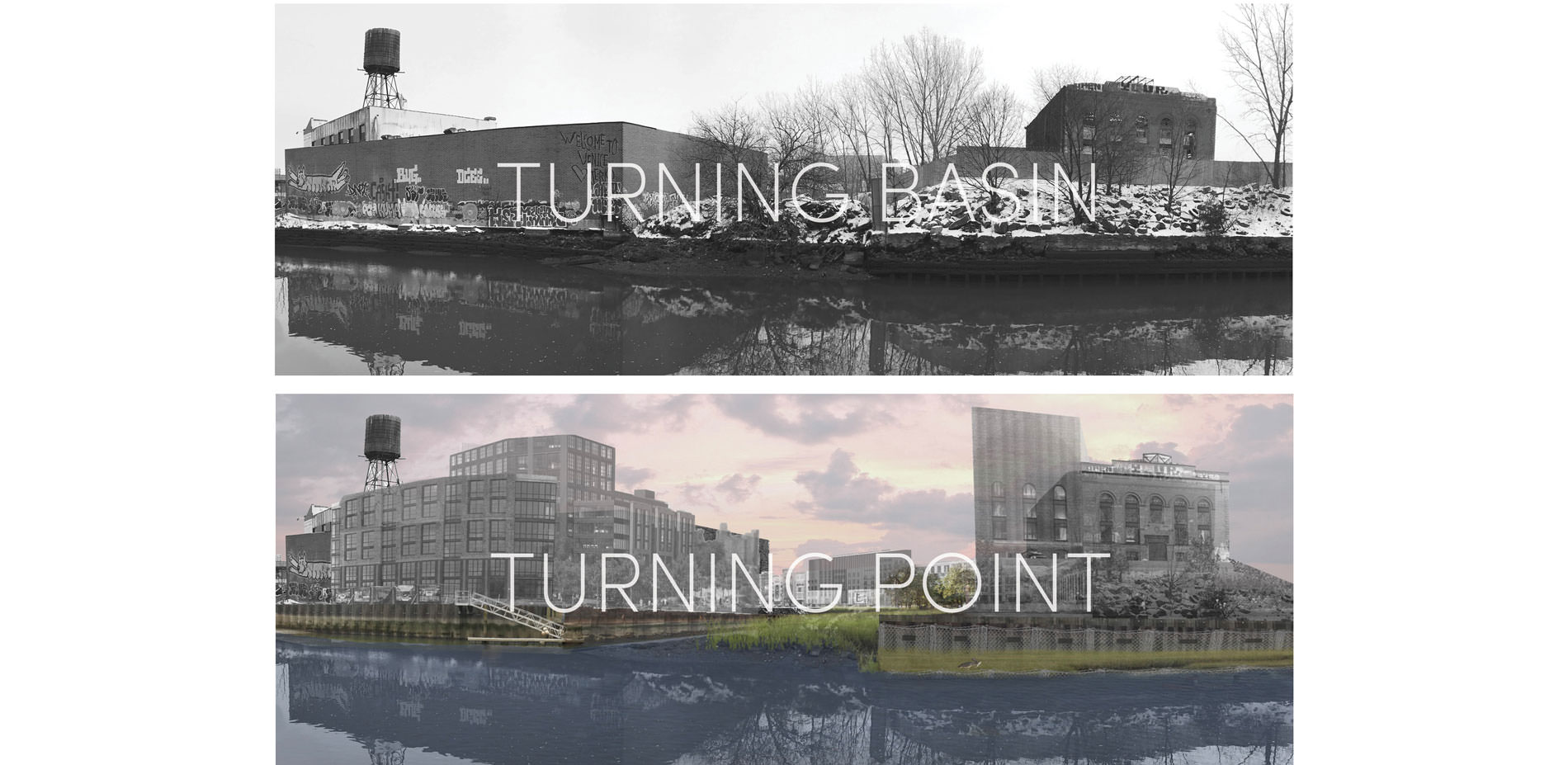The Turning Point: A Focused Design Study for the Gowanus Canal in Brooklyn, NY
HONOR
General Design
Brooklyn, NY, USA | Christopher O. Anderson, Student ASLA | Faculty Advisors: Richard Hawks, FASLA; Martin Hogue, ASLA
State University of New York
There is a thread throughout this project that talks about how the public, who has lived with this EPA Super Fund site for decades, deserves to be a part of the process of its cleaning it up.
- 2017 Awards Jury
PROJECT CREDITS
- Andrea Parker, Executive Director, Gowanus Canal Conservancy - Steering committee member
PROJECT STATEMENT
There is a street end abutting the Gowanus Canal in Brooklyn where the city dissolves into water. Asphalt cracks and gravel gives way to bricks and cobbles, which in turn surrender to sand, mud and the ever-lapping tide. Centuries ago, the Gowanus was a maze of brackish streams and wetlands, welcoming generations of Canarsee tribespeople, Dutch farmers, British merchants, and enterprising Brooklynites to stake their claim along its banks. Today, the canal is among the most polluted waterways in the country, sullied by decades of industrial contamination and combined sewer overflows and subsequently identified by the EPA as a Superfund site.
This project is the result of three months working in the field with the Gowanus Canal Conservancy followed by six months of research and design exploration. A phased approach integrates habitat restoration and public access into current remediation plans. Identifying a pilot site in the 1st street turning basin, the project outlines a framework of interventions that both reveal the narrative of the canal and accumulate to grow the future of the canal.
PROJECT NARRATIVE
RESTORATION: REVELATION
The Gowanus Canal in Brooklyn, NY is one of the dirtiest water bodies in the country, cut into one of the densest cities in the world. Over 150 years of intense human use has seen the canal sullied with toxic industrial waste and regular inundations of raw sewage during storm events. Before being confined within the walls of a canal, the Gowanus Creek flowed through an immense expanse of coastal salt marsh, ultimately emptying into the Gowanus Bay.
The canal has been the subject of significant attention and debate - particularly since it was designated as an EPA Superfund site in 2010 and is scheduled to be completely dredged and capped over the next two decades. The conversation surrounding the canal is often flecked with regret at the loss of the natural state of the landscape and the rich biodiversity that was paved over in the name of progress. This progress is ongoing, with a forthcoming re-zoning expected to unleash a new wave of development on what is already becoming one of the city’s fastest growing neighborhoods.
The next few decades promise to be a time of great change for the Gowanus Canal, and change requires energy. Massive inputs of energy will be required for both the EPA remediation and anticipated development. Simultaneously, there is a growing city-wide effort to restore coastal wetland habitats, with an estimated 85% of coastal wetlands within the NY-NJ Harbor Estuary having fallen victim to urbanization. While plans for the remediation of the canal have been fully developed, plans for restoration are tentative at best. Questions of how restoration can be done within the canal, what it would look like, or even if there is sufficient room for it to be effective, remain unanswered. This project frames restoration as a process of reconciliation and revelation, and engages with inputs of time and energy in exploring how they can be harnessed in the development of a new urban ecology.
DISTURBANCE: GROWTH
In the language of ecologic succession, a disturbance is a temporary change in environmental conditions that causes a pronounced change in an ecosystem. Viewed in these terms, the EPA’s Superfund remediation process acts as such a disturbance, providing opportunities for new growth. Just as a salt marsh does not grow overnight - just as a city isn’t built in a day - growth in the Gowanus will be the result of a combination of time - in this case decades, and energy - in this case from the remediation and redevelopment processes. And just as both salt marshes and cities need pioneers in order to grow and thrive, any intervention along the Gowanus must be anchored by a pilot site from which to establish the components of a larger, more comprehensive system.
In addition to the dredging and capping of the main channel, the remediation process includes the excavation of the former 1st street turning basin in order to create additional water surface area that will be lost as a result of bulkhead repair and replacement. Originally the northernmost turning basin in the canal, the 1st st basin was illegally filled in the mid-20th century. Today, this rubble-filled trench sits in a narrow strip of city-owned land and is slated to be among the first milestones of the Superfund process, with excavation scheduled to begin within the next two years.
The 1st st basin can be the pioneer site from which the next incarnation of the canal takes root. To do so, the treatment of the site must be adaptable and expandable. Any intervention must be viewed as part of a process, rather than a static product, in order to integrate with the transformation of the canal that will take place over a matter of decades - prone to delay and setbacks like any other regulatory process, particularly in our current political environment. A phased design strategy is able to guide the transformation of the 1st st basin, and ultimately, inform the development of the larger Gowanus greenscape.
EXCAVATION : CREATION
This phased approach begins by embracing excavation as an act of creation. Observation areas would invite onlookers to witness the work and introduce the idea of the basin site as being within the public domain. These spaces would grow over time from lightweight, tactical interventions to more formalized, permanent installations. As excavation of the basin continues, the site would act as a living museum. Given the deep history of the site - native Canarsee tribes, Dutch agriculture, Revolutionary War battles, and industrial development - archaeologists anticipate a high likelihood of historically significant artifacts to be uncovered in the excavation process. These remnants could be put on display to allow the narratives of the landscape to speak for themselves.
Excavation of the basin and installation of the pollution prevention cap would allow for the establishment of a robust patch of salt marsh habitat. By modifying the typical flat cap design into a sloped basin floor, approximately 15,000 square feet of viable intertidal planting area would be created. The planting of the salt marsh could be volunteer-driven, taking advantage of the dedicated volunteer corps of the local Gowanus Canal Conservancy, building public investment and engagement with the project and the future of the Gowanus.
The space within the basin prioritizes the salt marsh ecosystem while still allowing for access and exploration via a sloping ramp and rubble-filled gabion walks that make visible the rise and fall of the tide and act as debris collectors. The upland space to the north of the basin, on the other hand, prioritizes people. Public access is threaded through anticipated private development, revealing a panoramic plaza that serves as a gateway to this new typology of public open space along the Gowanus. A long-buried freshwater spring, evidence of which can be seen today in clean water seeping from the canal’s bulkheads, would be captured in an underground cistern and brought to the surface, allowing for the opportunity to interact with a unique hydrologic feature that has been hidden for over a century. This fresh water stream, tumbling across the upland plaza and cascading into the basin, helps to increase dissolved oxygen levels within the canal as well as assists in flushing out the basin, both crucial to a cleaner canal.
EXPANSION:CONNECTION
Connectivity is important, both in terms of pedestrian movement and habitat health. As the Gowanus greenscape expands, the 1st street basin would serve as the hub from which spokes of access and ecology would continue to grow. Utilizing the bulkheads of the canal as a scaffolding, esplanades would extend along the main channel of the canal. From the edge of the bulkheads would be hung planted frames, built and installed by volunteers, that would allow for the salt marsh habitat established in the basin to grow, providing perches for marine fowl, shelter zones for fish, and opportunities to establish bivalve communities of oysters, clams and mussels. These bulkhead treatments could ultimately inform completely novel reconfigurations of the canal’s edge in which the boundary between land and water is softened. Finally, the remaining four turning basins within the canal would allow for an additional 3.5 acres of salt marsh habitat that would intercept pollutant laden runoff, contributing to the overall health of the canal.
While it is undeniably crucial to think in terms of the canal in its entirety, it is equally important to remember that any larger plan for the canal must begin with a series of smaller steps and interventions. Throughout this project, this process-oriented approach has been a guiding strategy, leading to the generation of a series of ideas that are adaptable to an ever-changing ecological, political, and social environment that will influence the transformation of the Gowanus Canal for decades to come.
